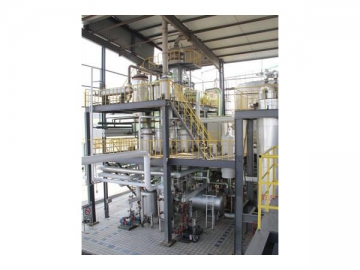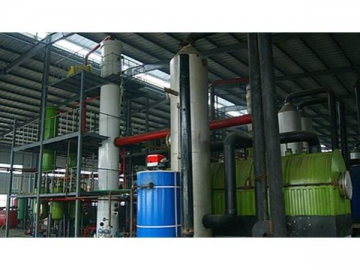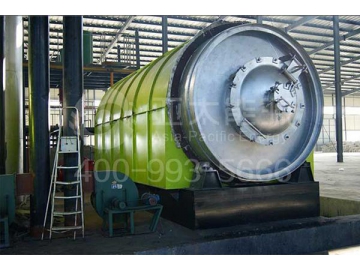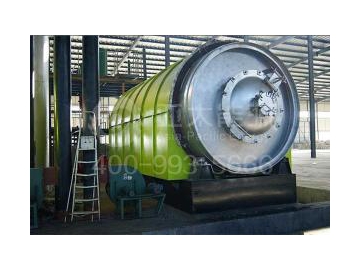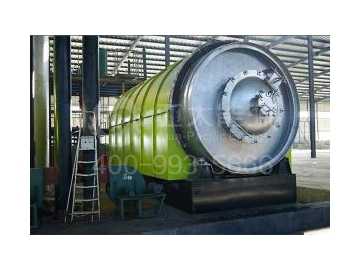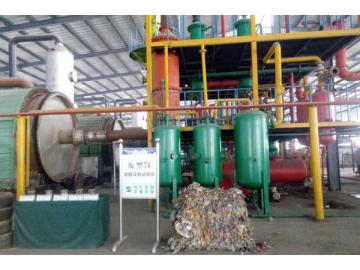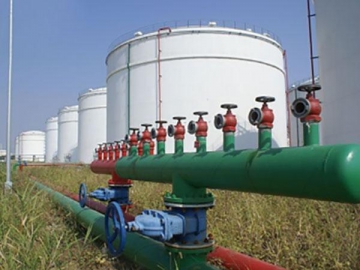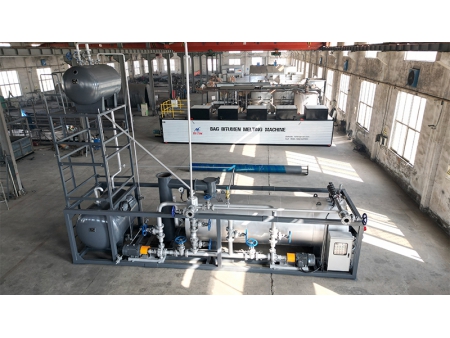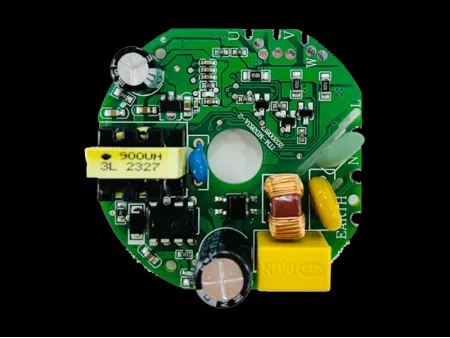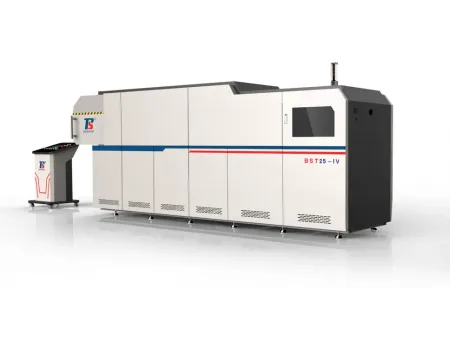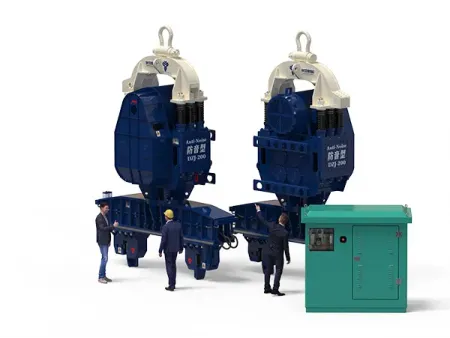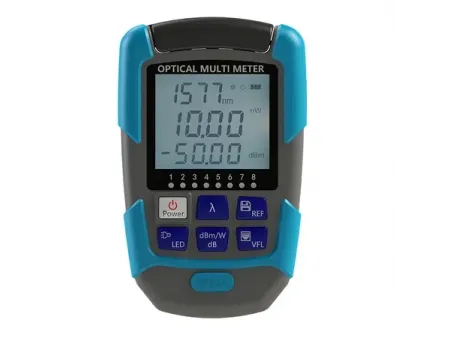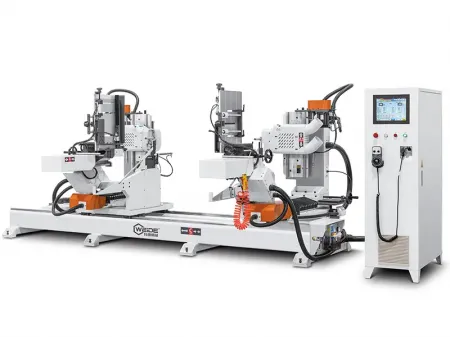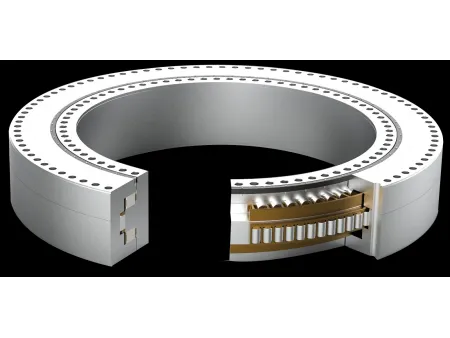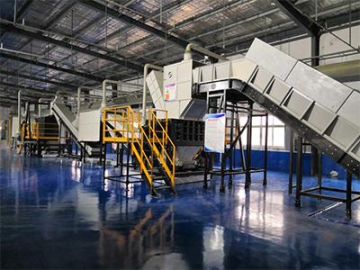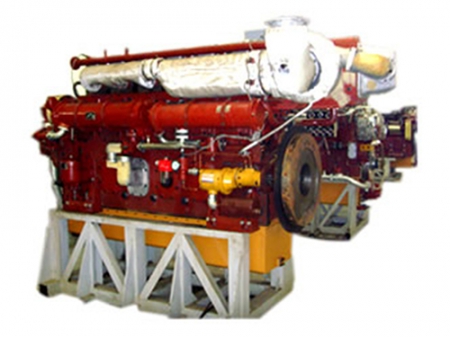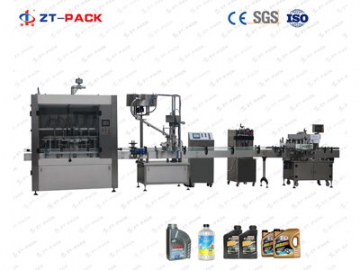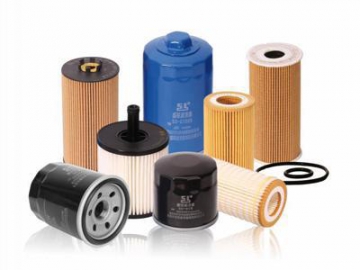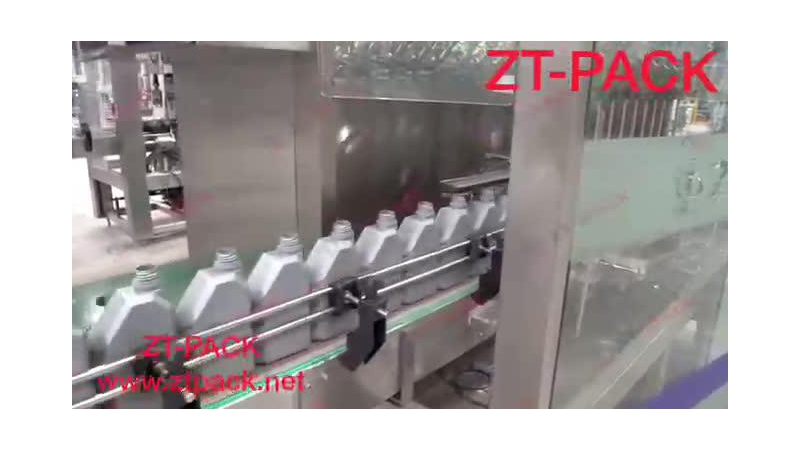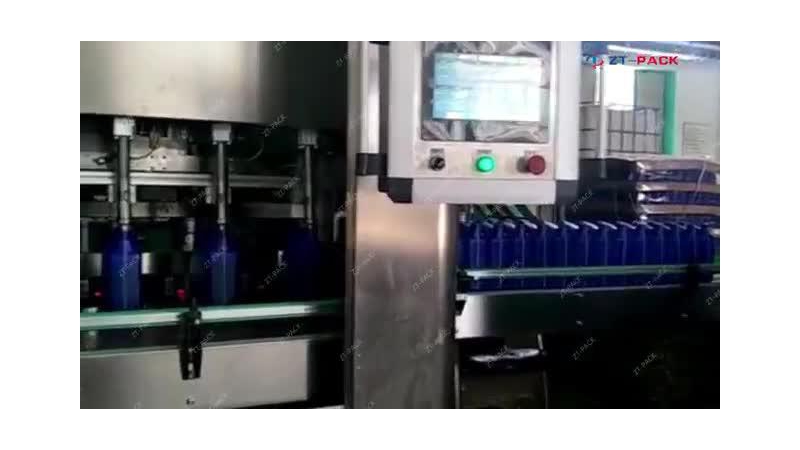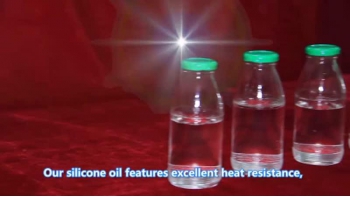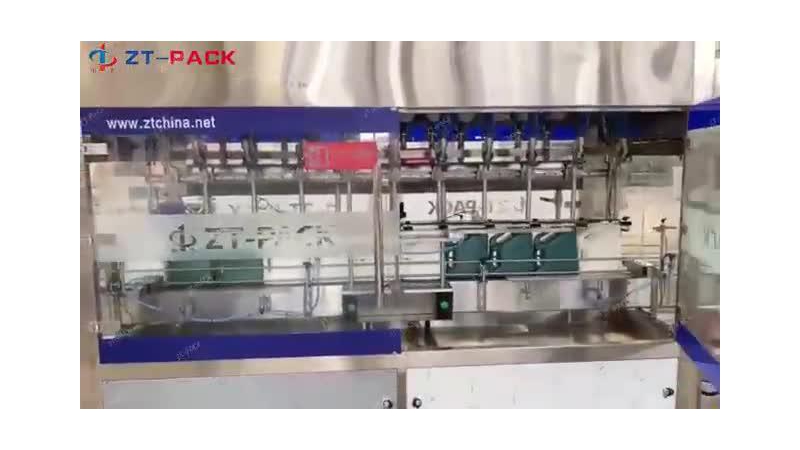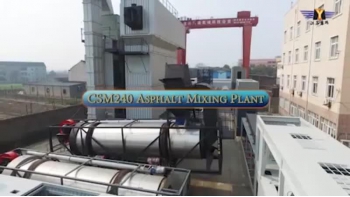Waste Engine Oil Distillation Plant (Base Oil Production)
In the distillation process of turning waste motor oil to base oil, the waste oil recycling plant adopts continuous distilling technique. It heats the waste oil to 300℃ under negative pressure. Since there is a lot of water containing in waste motor oil, dewatering is a must before distillation. The whole process can be described as: the waste oil firstly conducts a heat exchange between the gas phase group at tower top for preheating. Then the heated oil enters the falling film evaporator and utilizes the flue gas for second heating and dewatering. To ensure the temperature has reached our standards before distillation, molten salt is needed to heat the dehydrated motor oil. Then the oil will enter the power for distillation, during the process of which reflux ratio is controlled accurately. After condensing, the gas in top tower will be collected into a light component tank as a mixture of petrol and diesel, the heavy component will be used for base oil after decolorization and filtration, while the gas in bottom tower will be put into residue tank to be fuel, and the non-condensable gas will be used for heating the furnace after being water sealed. (According to clients' demands, higher distillation requirements can be met for this recycling plant)
| Model | ||||
| Raw materials | waste motor oil | |||
| Structure | horizontal type with tower | horizontal type with tower | horizontal type with tower | horizontal type with tower |
| Heating method | direct heating | direct/indirect heating | direct/indirect heating | direct/indirect heating |
| Processing volume (at least) in 24 hours | 10t raw materials | 20t raw materials | 30t raw materials | 50t raw materials |
| Working style | intermittent | continuous | continuous | continuous |
| Pressure | negative pressure | negative pressure | negative pressure | negative pressure |
| Oil yield (at least) | 80% | 80% | 80% | 80% |
| Power | 22.7kw | 31kw | 40.0kw | 50.0kw |
| Cooling method | water cooling | water cooling | water cooling | water cooling |
| Cooling water circulation (T/h) | 40 | 60 | 80 | 100 |
| Installation | guidance is offered at the construction site | guidance is offered at the construction site | guidance is offered at the construction site | guidance is offered at the construction site |
| Noise dB (A) | ≤85 | ≤85 | ≤85 | ≤85 |
| Production cycle | 30 days | 40 days | 40 days | 40 days |
1. Advanced Technique
This distillation plant is efficient in both economic and ecological benefits, helping to dramatically save the production cast and equipment investment, as well as simplify operation.
2. High Resource Utilization
In the oil distillation process, heat exchange is conducted continuously for several times for the products and raw materials, realizing a recycling of thermal energy.
3. Energy Saving & Environmentally Friendly
For the consideration of both saving energy and preventing pollution, the refining equipment lets the non-condensable gas to be burnt as fuel in the furnace.
4. Good Oil Quality
The distillation plant is able to adjust the reflux ratio as it runs, ensuring the color of oil.
5. High Automation
The high automation of the oil distillation plant makes it easy-operated and saves a lot labor cost.
6. Low Noise
During the running process of the distillation plant, the noise is no more than 65dB. No smoke will be produced.
7. High Efficiency
The distillation process for waste engine oil is performed under negative pressure, both lowering the temperature required for reaction, and saving energy, as well as preventing the motor oil from cracking under high temperature.
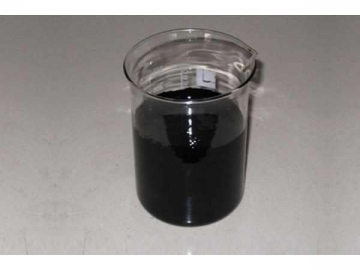 Waste motor oil
Waste motor oil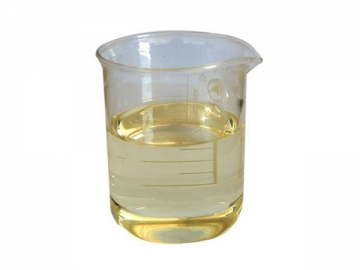 Final diesel
Final diesel

